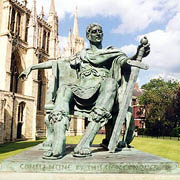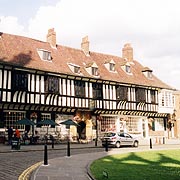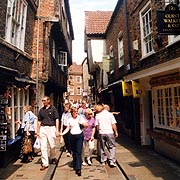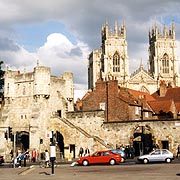
York, Yorkshire
 |
 |
 |
 |
York is the capital of the North of England. It was the Roman military town of Eboracum and there are several Roman remains to be seen today, chief of which is the Multangulat Tower. Septimus Severus and Constantius both died there and Constantine was proclaimed Emperor in the city. The place seems to have continued into the Dark Ages as the capital of the British Kings of York. The Saxon Kings of Deira later took over and the so-called 'Anglian Tower' is said to date from this time. The cathedral, or great minster, was certainly founded by the Saxon King Edwin with the help of St. Paulinus. It was rebuilt several times. The Norman building can be seen in the undercroft of the present medieval structure. It is the biggest Gothic Cathedral in the World. It was the Vikings who made York into a great city when it became the capital of the Danish Kings of York. The remains of their houses have been extensively excavated and are famously recreated at the Jorvic Centre. York has the longest and finest set of city walls in Britain, complete with its four original gates, or bars. The city is famous for its quaint streets, like the Shambles, filled with ancient overhangs. Other fine buildings include St. William's College, the Treasurer's House and the King's Manor, where the Council of the North met. Clifford's Tower at the castle was the scene of an appalling massacre of the Jews. The castle museum is full of fascinating old street scenes. Guy Fawkes was born in Petergate and Dick Turpin is buried near Walmgate.
The pictures on this page are cropped examples of images in our high resolution photo library. Please e-mail us for details of these or similar image availability at our very reasonable reproduction rates.